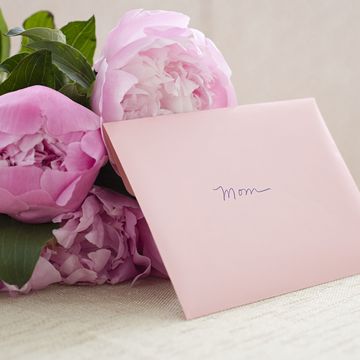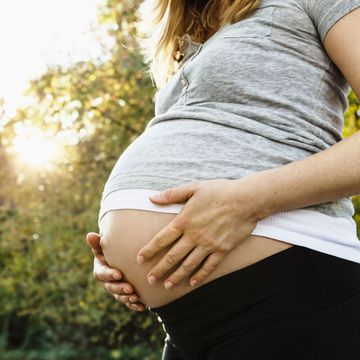Ever considered adopting a child? I'm right there with you.
Having struggled through two years of infertility, I've often pondered the possibility of adoption—while still opting for treatment and clinging to the hope of getting pregnant myself. All things considered, my end goal is to have a family, and I've become increasingly open to pursuing any means that will achieve that end. So imagine my intrigue when I learned there was an adoption method that a) allows you to carry and give birth to the baby and b) costs thousands of dollars less than traditional adoption. (Talk about a happy medium, right?)
Welcome to the fascinating—and somewhat uncharted—world of embryo adoption. Here's how it works: Women who've been through IVF and have excess frozen embryos agree to donate them to infertile couples. Following a selection process that somewhat mimics traditional adoption, the adoptive mother is then implanted, and in an ideal outcome, impregnated with the chosen embryo.
According to HRC Fertility's Jane Frederick, M.D., the concept has started to gain popularity due to the sheer number of frozen embryos (or "snowbabies") that are often left to languish. "There are over 400,000 embryos in storage across the country, and unfortunately thousands of them have been abandoned," says Frederick. "Over the last 10 years, I've seen couples become more open to the idea of doing something altruistic and donating their unused embryos to other couples."
For women who desire the experience of childbirth or want to raise a newborn, adopting an embryo can be an attractive option. "It's so incredibly uplifting for a mom to go through nine months of pregnancy and delivery," says Frederick. "For patients who are thinking about going for adoption or donor eggs, genetics are no longer so important. So why not carry the pregnancy and create that special bond [via embryo adoption]?"
The cost can also be a selling point. At HRC Fertility, the embryo adoption process costs approximately $6.5K—relatively affordable in comparison with the average costs for IVF ($12.4K) and traditional adoption ($10K-15K). This fee covers essentially all costs, including the frozen embryo cycle, legal transactions, matching and selection, and infectious disease screening.
Choosing an embryo can be an involved process. HRC Fertility patients browse through a catalog containing profiles that include basic information, such as ethnic background, height, weight, eye color, hair color, or "things you might find in a donor egg or donor sperm catalog," says Frederick. Determining embryo viability is also incredibly important; various factors play into success, such as age of the biological mother when the embryo was frozen and how long the embryo has been in storage.
Sounds worth considering for women who've been unsuccessful in their own IVF and reproductive efforts… So why don't more people know about it?
Frederick believes is that "physicians and specialists don't educate the public on what to do with their frozen embryos." (See her article on the topic here.) She adds that many people with frozen embryos in storage are resistant to the idea of donating them, estimating that just two percent of couples are currently willing to do so.
"Nationwide, it's still a very low number," says Frederick. "Some people don't feel comfortable with the idea of someone else carrying their child, and would rather just abandon the embryo."
To promote awareness, Frederick always urges couples to consider what they'll do with excess embryos before going through IVF. She also shares with them the reality that embryos have a lesser chance of survival the longer they are frozen. "Every year an embryo is in storage, it's a slow death. People can't come back 15 years later and expect them to have all survived," says Frederick. "If a patient has any reason to believe they won't be using embryos in the future, I always encourage them to allow us to donate to another couple."
As for me? I'm still on the track of trying to have my own biological baby—and am about to start another fresh IVF cycle in October. But nothing is guaranteed, and just knowing options like this exist gives me renewed hope that I'll eventually be able to achieve my dream of motherhood, one way or another.
Would you ever consider donating or adopting embryos, or have you done so already?
Jen Jones Donatelli is an author and journalist whose work and photography have appeared in Conde Nast Traveler, LA Confidential, Natural Health, Variety, San Francisco, Whole Life Times, Clean Plates, Total Beauty, and many more. When not typing the day away at her laptop, she is also a journalism instructor for Ohio University, MediaBistro, and StoryStudio Chicago. Specializing in all things lifestyle and wellness, Jen is passionate about the topic of fertility—and thrilled to explore it more fully for REDBOOK. She lives in Los Angeles with her husband, Joe, and beloved spaniel pup, Tanner.
Related:
"How Are You?" and Other Phrases Guaranteed to Make Your Infertile Friend Cringe
What NY Times Blogger Amy Klein Has Learned From Her Fertility Journey So Far
Jennifer Aniston Explains Why Motherhood Shouldn't Define You








